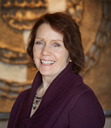Molly Larkin's Blog, page 14
March 25, 2015
Mindfulness and the “Pink Floyd Moment”

 This is a guest post by David Nelson, PhD
This is a guest post by David Nelson, PhD
A few months ago, Molly and I were having supper together in a real nice little vegan café in Madison, Wisconsin. We were exchanging stories of our ways of helping people cope, and I relayed to her one of the experiences I had in teaching people how to relax.
I also explained how many counselors today are just very boring in their professions, and need to spice it up a bit.
You see, about 10 years ago, a gentleman came into my office stating that he had chronic pain in his lower back. He explained he was a carpenter and that the only thing that seemed to help him manage his pain was smoking marijuana.
He turned to me and said, “I heard you do hypnosis, and I was wondering if you could hypnotize me to be stoned all the time? I don’t want to lose my job with a dirty urine analysis. I figured if I could hypnotize myself to be stoned, it would manage my pain and I could keep my job.”
My first thought was, “Is he kidding?”
Then it dawned on me, “Why not?”
So, I looked him in the eye, leaned forward a bit, and said, “Yes, I can.”
So, I proceeded to teach the gentleman how to do self-hypnosis for the management of his chronic pain through mindfulness and inducing what I now call a “Pink Floyd Moment.”
This gentleman was extremely successful with this technique, and was able to successfully manage his chronic pain and maintain employment.
But more importantly he learned how to better manage his mind…period.
I didn’t think much of this at the time, but over the years I began teaching it to a few select individuals. Then about six years ago I was presenting to a group of drug and alcohol counselors at a national conference on “Awakening the Inner Warrior” — the power of the mind to assist in healing and recovery.
In the middle of my presentation a ‘little voice’ in my head said, “Teach the Pink Floyd Moment.” At first I shrugged it off. This was a room filled with 60 drug and alcohol counselors, and I was concerned they might not like the idea.
Fortunately for me, and the room full of counselors, I buckled in to my little voice, and asked, “How many of you would like to learn how to become stoned with just the power of your mind?”
Immediately, 60 hands went up into the air.
So I proceeded to teach them how to use their mind to induce a hypnotic Pink Floyd Moment. It was an overwhelming hit at the conference, and at the next morning’s breakfast, one of the counselors wore his Pink Floyd shirt and made sure that I knew he wore it for me. He mentioned he thoroughly enjoyed the presentation on how to induce an incredibly deep state of calm with just the power of his mind.
So, without further ado, here is the simple technique. It is a combination of visualization, NLP [neuro-linguistic programming], and some simple breath work.
The first step is to get yourself in a comfortable position, either in a nice chair or couch, preferably sitting upright.
Step two: Take a cleansing breath by inhaling, holding the breath for a second or two, and gently exhaling while the body relaxes.
Step three: Steps one and two are good, but can be made better when you imagine that you are holding a ‘roach’ in between your index finger and thumb, and then toke on the roach. And pretend that you are toking in really deep on that first initial inhale. Hold it and let it out slowly, and just feel the effects of your body relaxing, perhaps listening in your mind to some Pink Floyd. I prefer “Comfortably Numb.”
Now this is a REAL cleansing breath, which I simply call “toke on a roach breath,” and much more effective in inducing a quick relaxation over the body. I tell people to do this at least 2 to 3 times to get themselves nice and relaxed.
Step four: And now while you are relaxed, actually hold your thumb and middle finger together, either hand is sufficient. And begin to imagine one of the best buzzes you have ever had.
Now this technique infers that you have smoked marijuana in the past and had some good experiences. If you’ve never smoked marijuana, just imagine a real nice deep state of relaxation or a very mellow time in your life. However, if you had some real good buzzes in the past take some time to relive these while being comfortably relaxed in your chair. Enjoy the buzz for as long as you desire.
What is beginning to happen now is that your subconscious mind will begin to associate the touch of your thumb and middle finger together with a deep state of Pink Floyd Moment. And the more that you practice, the quicker and deeper you can go.
You can do this technique while sitting in a meeting, or listening to a lecture or just preparing yourself to do some writing. As long as your imagination or remembrance of a good buzz is not debilitating.
In all the years that I have practiced and taught this technique, I’ve had only one person show their displeasure for it. It was a woman who worried it would trigger cravings in people. I told her that would be wonderful because then this person will now have an alternative to manage his or her cravings, rather than actually go and get buzzed.
And, yes, it is best to be very judicious in teaching this technique to others. Obviously, you would not teach this to someone who just came out of drug rehabilitation. But for a group of drug and alcohol counselors, who have been stable for long time, it was a very positive experience….and fun! I know I enjoy it!
So I hope you enjoyed this brief article, and now for some reason I’m craving a pizza.
David Nelson, Ph.D. is a Licensed Professional Counselor and Hypnotherapist specializing in helping people going through physical, emotional and/or psychological suffering. He is also the author of Black Belt Healing: A Martial Artist’s Guide to Pain Management and Injury Recovery (Harnessing the Power of the Mind) (Audio CD included) [Tuttle Publishing 2010]. You can visit his website at www.blackbelthealing.com
[Tuttle Publishing 2010]. You can visit his website at www.blackbelthealing.com
March 18, 2015
On the spring equinox, dancing and spiritual growth

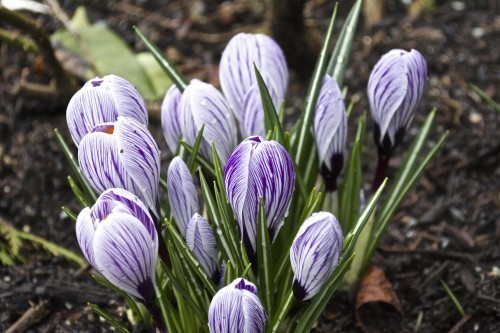
This year the spring equinox in the Northern Hemisphere is Friday March 20, at 22:45 UTC [coordinated universal time].
It’s a day of equal balance of the hours of light and dark before the sun continues its journey towards longer daylight hours and warming temperatures.
The equinox energy is strong for four days before and after March 20th, giving us time to bask in the opportunities and lessons it brings.
WHAT SETS THE SPRING EQUINOX APART FROM OTHER DAYS
Ancient cultures throughout history have celebrated this time of rebirth of Mother Earth. But what does it mean for us?
The earth is comprised of 70% water and, on average, so is the human body. That alone is a giant clue as to how interconnected we are.
What happens to the earth’s energy also happens within us, therefore we can experience more harmony if we work with the earth’s cycles instead of ignoring them. It’s not just another day.
Here are some of the aspects of the Spring Equinox and how I incorporate them into my own life so as to better communicate with the spiritual forces of the earth. You may wish to do the same.
WHAT IT TEACHES US ABOUT BALANCE IN OUR LIVES
The equal hours of day and night represent balance: a balanced life is a healthy life. Do you eat enough healthy food?
Drink enough water?
Get enough sleep?
Exercise?
Play?
This is a good time to look closely at our lives and how to improve them.
HOW TO RENEW YOUR ENVIRONMENT
Even though it doesn’t look like it in the northern U.S. right now, the earth is either starting to green up or will very soon. That greening represents renewal: clearing out the old to make space for the new.
What was dead [the earth by all appearances in this part of the country] comes back to life. What a miracle that is!
There’s a reason Easter and Passover are celebrated at this time of year!
Let spring cleaning be more than just vacuuming and dusting. Start the process of renewing your heart and mind by cleaning out closets and drawers to pass on those things we no longer use or wear regularly.
A good rule of thumb is: if you haven’t used it in the past year, let it go. Let your local shelter or non-profit thrift store benefit.
Holding on to old “material stuff” is also a representation of holding on to old “emotional stuff.” Be courageous and start the process of release and renewal.
If you have sage, smudge your entire house. Or use essential oils such as lavender to refresh and renew the home.
And don’t just clean the house. Clean the earth around it. Why not go for a walk this week and pick up trash along the side of the road? The earth spirits will thank and bless you.
There’s no dishonor in cleaning up after others who disrespect the earth. We are all earth keepers.
This is a good time to clean out the garden and plant something new. Clear out the old growth and dead leaves in your garden and ceremonial areas.
In the Native American tradition, bless your gardens with cornmeal or tobacco or a simple prayer.
If you have no outdoor gardens, bless your houseplants. And renew them: cut off the dead ends, check for insects. Are they happy where they are, or do they need a new location or a new pot?
Let your house plants represent inviting the green to return and bring goodness and abundance into your life.
And as your gardens start to be reborn, so can other projects in your life. What were you thinking about and planning over the winter? Now’s the time to take the steps to birth them into reality.
SURPRISES COME WHEN YOU LEARN TO BE OBSERVANT
As I write this, it’s currently 37 degrees Farenheit here in Michigan, and there’s still snow on the ground. There’s not really any sign of spring.
But the alignment of the earth, sun and moon says otherwise. And we cannot argue with the planets or deny our connection to them. The earth knows what’s supposed to be happening when the sun is at this equal point, and is starting to comply, even if it doesn’t look or feel like it.
Take a walk outside. Be observant. Look closely. Look for buds and shoots coming out. The signs are there and, when you see them, they will bring joy to your heart.
Native Americans teach that one way to develop your intuition is by developing your powers of observation. Ask a question, then go for a walk outside and observe the natural world – the trees, grasses, flowers, animals, insects. Somewhere along the way, your observations will bring answers to your question.
WHAT THE EQUINOX CAN TEACH US ABOUT DETOXIFICATION
Our bodies naturally gain about 5 pounds each winter, as a way of helping insulate us from the cold. And in the natural course of things, we would lose those five pounds in the spring, as our activity level increases and we eat lighter food.
But the reason such a large percentage of the U.S. population is overweight is that we don’t lose those five pounds each spring because we don’t increase our exercise or lighten our diets. As a result, we’re gaining weight every year!
Spring is the time to change your diet. Start moving to lighter, easy-to-digest foods, and avoid dairy, fried or oily foods. Eat local, fresh fruits and vegetables as they become available.
In fact, you may intuitively feel yourself wanting change your diet this time of year.
You might even talk to your holistic health practitioner about doing a detox cleanse.
WHY THE EQUINOX IS A TIME FOR GRATITUDE AND CELEBRATION
Give thanks for all the joys, gifts and lessons of the winter.
Give thanks for all the good things springing up around us.
Give thanks for what you have and trust the Universe to continue to bring you more of what will serve your highest good.
I like to make a special meal and put some on an offering plate to be put outside for the nature spirits. This is an age-old gratitude prayer practiced by indigenous people all over the world to give thanks for the food that we eat, another gift from Mother Earth.
Celebrate the return of light and green and goodness.
And dance as if no one is watching while you’re at it.
[A version of this post was published on March 20, 2014].
March 12, 2015
The One and Only Thing That’s Missing From Your Life
The Seeker, The Search, The Sacred
Something is happening today that could transform untold numbers of lives — including your own… and here’s how you can be a part of it.Right now, as you read this, over 200 leading authors and experts are sending out this vital information so you and people around the world can start living fully, freely, and fearlessly. And it’s all happening today, March 12th.Watch this stirring short video to find out what’s going on:
http://www.YourImmortalSelf.org/special/P1935/
The big news is that my friend Guy Finley has written a new book that opens the doors to your brighter, more authentic life. It’s called The Secret of Your Immortal Self, and it’s being simultaneously released today in 142 countries. This book is so illuminating, and Guy is so well respected by his peers, that over 200 leading authors and experts are joining to spread the news. It’s a wave of enlightenment that’s racing across the planet right now.
If you’d like to learn the deeper secrets of your own self, and unlock all the love, vibrant energy, and confidence that lie within you, here’s the key — along with a FREE live webinar with Guy Finley, and over 120 additional free bonus gifts.
Visit this link now for all the details. This could be the turning point of your life.
http://www.YourImmortalSelf.org/special/P1935/
All best wishes for true happiness,
Molly Larkin
March 2, 2015
The Ultimate Guide to Positive Thinking: Top 50 Posts
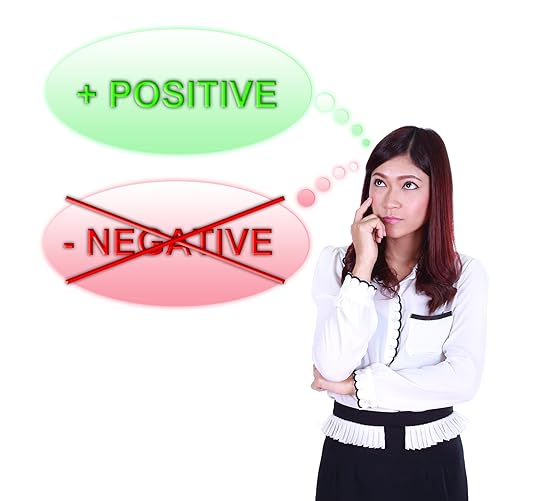
 Do you struggle with staying positive?
Do you struggle with staying positive?
Are you someone who sees the glass as half empty?
Research shows that people who practice positive thinking are less likely to be unemployed and more likely to be physically healthier and live longer.
That should be some good incentive to try to think more positive.
Yes, it does take practice. But the good news is that anyone can learn to do it.
I used to be chronically sad and depressed. All the clothes in my closet were navy blue because I had the “blues” all the time.
Then one day a friend I hadn’t seen in a month asked me how I was and I started saying, “Well, I’ve been having a hard time lately…”
She replied, “You’re always having a hard time. That’s just the way you are.”
I was shocked.
Was that really how people saw me?
Was I that negative all the time?
It was a real wake-up call and I made a vow then and there to change. I started studying the power of language, thoughts and the outcomes we create for ourselves and gradually was able to turn myself into a more positive person.
Was it work?
Of course.
But like learning a new language, consistency is the key.
I’ve researched posts and YouTube videos on the art of positive thinking to empower readers in making the switch from negative to positive thinking. Perhaps not every hour of every day, but most of the time
Your life will be so much easier if you do! Good luck!
I’ve organized the posts [and videos] into nine different categories as follows:
What is positive thinking
How to think positive [Going from negative to positive]
Research on the benefits of positive thinking
What else is needed
Self-esteem
Relationships
Handling stress
Positive thinking and health
Positive thinking for children
Inspiration
ONE: WHAT IS POSITIVE THINKING

TWEET THIS: Positive thinking relates to what makes people happy and fulfilled. @Kendra Cherry
It is NOT seeing the world through rose colored glasses. It’s about learning to approaching life’s challenges with a positive outlook.
1. What is Positive Thinking - Kendra Cherry
2. What Is Positive Thinking – Leading Personality
TWO: HOW TO THINK POSITIVE
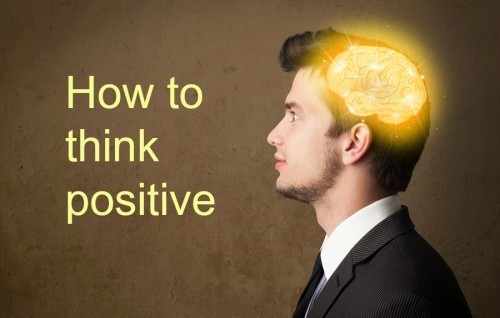
TWEET THIS: You’ve got to remember where you’re going if you want to get there. @PeacefulChris
Thinking positive isn’t an attitude you’re born with; you can learn to do it, just like any other skill. And your life will be better for it. These posts include instructions on how to develop that skill.
3. 3 Ways to Stay Positive [Even When It Feels Like Everything’s Falling Apart] – by Chris Butler
4. How to Reprogram Your Mind for Positive Thinking – Brendon Burchard
5. 7 Ways to Rewire Your Brain for Powerful Life Changes – PowerofPositivity.com
6. 6 Steps to Becoming a Positive Person – Mo Seetubtim
7. 10 Tips to Overcome Negative Thoughts; Positive Thinking Made Easy – Michelle Uy
8. Positive Thinking: 7 Easy Ways to Improve a Bad Day – Geoffrey James
9. 10 Ways to Transition from A Negative to a Positive Thinker - Jordan
10. 21 Tips for Turning Negative Thinking Into Positive – Molly Larkin
THREE: RESEARCH ON POSITIVE THINKING

TWEET THIS: Positive people live longer. @JonGordon11
The science on the benefits of positive thinking might be enough to persuade you to try.
11. The Science Behind Positive Thinking Your Way to Success - Oliver Joy
12. How the Power of Positive Thinking Won Scientific Credibility – Hans Villarica
13. Benefits of Positive Thinking – Kendra Cherry
14. 11 Benefits of Being Positive - Jon Gordon
FOUR: WHAT ELSE IS NEEDED
 TWEET THIS: “Want change more than anything else.” @Denise Simone7
TWEET THIS: “Want change more than anything else.” @Denise Simone7
15. The Problem With Positive Thinking – Gabrielle Oettingen, N.Y.Times
16. Does Positive Thinking Really Make Our Lives Better? - George Dvorsky
17. The Case Against Positive Thinking – At Work – Angela Chen, Wall St. Journal
18. The Gift of Good Days - Wendy Watkins
19. Why Positive Thinking Doesn’t Always Work - Denise Simone
20. 10 Things to Stop Doing If You Want To Be Happy – Henri Juntilla
21. 5 Steps to Reset Your Mood for More Power - Rajesh Setty
FIVE: SELF-ESTEEM

Building self-esteem is an important part of staying positive. Find tips in these posts.
22. 10 Ways to Boost Your Self Esteem Right Now – PowerofPositivity.com
23. 5 Ways to Make Yourself Believe in Yourself - Kristen Butler
24. My Path to Positive Thinking – Emily Roberts, MA, LPC
SIX: RELATIONSHIPS
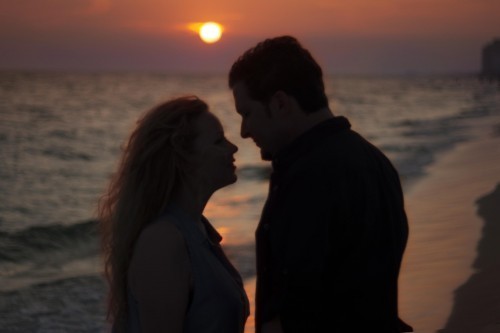
TWEET THIS: Making the commitment to change is a big deal. @BartonGoldsmith
In order to have a relationship that is built on mutual respect and trust, positive thinking must be used to help people believe that successful relationships are in fact possible.
25. Improving Your Relationships with Positive Thinking – socialmeems.com
26. 10 Ways to Perk Up Your Relationship - Darby Saxbe in Psychology Today
27. Can Simply Being Positive Improve Your Relationship? - TwoOfUs.org
28. How to Make Your Relationship More Positive – Barton Goldsmith, Ph.D.
SEVEN: HANDLING STRESS

Positive thinking helps with stress management and can even improve your health.
29. Positive Thinking; Stop Negative Self-Talk to Reduce Stress – Mayo Clinic Staff
30. How Does Positive Thinking Impact Your Stress Level? – Elizabeth Scott, M.S.
31. Stress Management: Identifying Negative Thinking – Mayo Clinic
32. Think Positive and Reduce Stress – Barb Veder
EIGHT: HEALTH
 TWEET THIS: Seek joy, play often, and pursue adventure. Your brain will do the rest. @James_Clear
TWEET THIS: Seek joy, play often, and pursue adventure. Your brain will do the rest. @James_Clear
33. How Positive Thinking Builds Your Skills, Boosts Your Health - James Clear
34. 5 Ways to Think Yourself Well – Sara Cheshire
35. How Positive Thinking Can Improve Your Health – Dr. Oz and Dr. Roizen
36. Think Positively to Be Healthier - Deborah Dunham
NINE: POSITIVE THINKING FOR CHILDREN

TWEET THIS: Each night, ask your children their success of the day. @JonGordon11
Children need help thinking positive just as much as adults do.
37. 10 Activities to Help Young Children Develop A Positive Attitude – Chelsea Lee Smith
38. 10 Ways to Help Kids Think Positive – PowerofPositivity.com
39. Positive Thinking for Kids - Jon Gordon
40. Teach children the Power of Positive Thinking – Mellisa Dormoy, CH
TEN: INSPIRATION
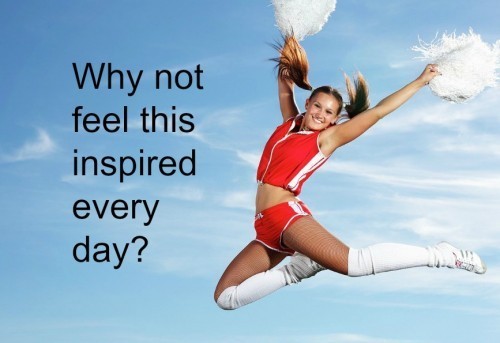
TWEET THIS: You have the ability to control what you’re thinking. @Oprah
Here are some posts/videos I found just plain inspiring. I hope you will, too.
41. How to reprogram your mind for positive thinking [14:56] – Brendon Burchard
42. How to think positive, have a positive attitude, and be positive [5:27] – Ahalya Kumaran
43. The power of positive thinking [14:23] – Tony Robbins
44. Your words and thoughts have physical power [9:57] – Will Smith
45. Will Smith on the Power of Positive Thinking [5:57] – Will Smith
46. Positive thoughts [3:36] – Dr. Wayne Dyer
47. How to stay positive when you don’t feel like it [5:16] – Drew Canole
48. How to give and receive positive karma/Oprah’s Lifeclass [3:50] – Oprah Winfrey
49. How to move past negative thoughts [3:17] – Oprah Winfrey
50. Teaching Positive Thinking [Jessica’s Daily Affirmation] [oo:50] – Jessica
I hope you found some motivation and inspiration in this selection of top articles on how to think positively in life. The results are in your hands; all you have to do is try!
Did you find any ah-ha moments in these articles? Please share in the comments below.
February 24, 2015
How to Boost Your Compassion: 20 Simple Acts of Kindness


When someone cuts you off in traffic, do you feel indignant?
If you’re like me, your answer was probably “yes.”
For many people, the first reaction in that situation is a negative one.
But given the state of affairs in the world, wouldn’t it be a good thing to put out a higher vibration?
To add good vibes where they’re needed?
To make the world a better place?
I’m sure you agree. But how does one do that?
I believe practicing compassion is one of the very best ways to do it.
Tweet: “Compassion is the radicalism of our time.” Dalai Lama
We never know what challenges and hardships another person may be dealing with that might cause them to act in a way we don’t like.
My friend Teri told me this story about herself:
On a road trip, she pulled into a gas station and, on her way to the pump, was cut off by a big RV heading for the same pump.
Miffed, Teri drove to another pump, silently cursing the RV driver who had cut her off. By the time Teri went inside to pay, the RV driver, an older woman, was in line before her.
Teri, wanting to act on her anger, planned to give the woman a dirty look when she turned around. But when Teri heard what the woman said to the attendant, her world shifted:
The woman said, “Would you please pray for me? My husband and I were on vacation and he died. I barely know how to drive the RV or put gas in it to get home.”
Understandably, Teri’s indignation immediately transformed into compassion for the woman in the RV.
So, imagine that everyone has some story like that.
Some hidden pain that causes them to act in a way not to our liking.
They may not have stories as dramatic as the one Teri heard, but it may be something really big to them.
Giving people the benefit of the doubt is the first step towards practicing compassion. And practicing compassion is one of the best ways I know to make this world a better place.
Tweet this: “Everyone you meet is fighting a battle you know nothing about. Be kind. Always.”
Here are twenty ways to add compassion to your life, from the simple to the more complex:
When you pass an accident or a road killed animal, say a prayer.
Donate to charitable causes.
Give a compliment.
Smile.
Share your umbrella.
Refuse to participate in gossip. Say something kind instead.
Say “please” and “thank you” on a regular basis.
Look your server/cashier in the eye and thank them. Call them by name if they’re wearing a name tag.
Write thank you notes.
Send birthday cards.
Change the toilet paper.
Bring re-usable shopping bags to the grocery store.
Let a passing car in before you.
Let fellow shoppers ahead of you at the checkout.
Contribute to a food drive.
Tithe – give 10% of your income to causes that inspire you.
Upset? Wait three days before you respond to that email or an unkind act.
Pick up trash from Mother Earth. I always hike with a trash bag for that purpose.
If you find an injured dog or cat, take it to the local animal shelter. They will get it the care it needs and attempt to find the owner.
Invite someone to dinner. Native Americans teach that if you give someone a gift of food, be it making them a meal or buying them groceries, you extend their life.
Engaging in any of these acts of compassion will undoubtedly make you feel good, and certainly make the people on the receiving end feel good.
And isn’t that what we all want?
“Love and compassion are necessities, not luxuries. Without them humanity cannot survive.” Dalai Lama
February 18, 2015
Are you sure the door is locked?

 Tuesday morning I arrived at 8:27 a.m. for my 8:30 yoga class and found all the students standing outside in the parking lot.
Tuesday morning I arrived at 8:27 a.m. for my 8:30 yoga class and found all the students standing outside in the parking lot.
I live in Michigan; it was snowing and the wind chill temperature was 3 degrees. I couldn’t have been more mystified to find everyone outside!
I was told the outside door was locked and the teacher wasn’t there.
One student said she had a key and we could go in and practice yoga on our own, or at least get out of the cold. No one moved.
And no one checked the door to make sure it was really locked. We all just relied on the report of the first person to try it.
While I texted the studio owner, someone else called her to see if she knew where our teacher was. The owner in turn called the teacher, who was actually inside and hadn’t realized the door had locked behind her!
She immediately popped her head out the door and let us all in!
Now, this all took place over the course of just five minutes. But, at 3 degrees, it was a very long five minutes.
I reflected during class on the irony of the fact that we all readily assumed we were locked out when one of us even offered to unlock the door, and the teacher was inside the whole time.
No one even double-checked that the door was really locked.
This was a prime example of assumptions leading us astray.
And of giving up too easily.
How many times in our lives have we made assumptions that turned out to be wrong? Or followed the crowd because, surely someone would have solved the problem if it was solvable?
I have consulted the I Ching for answers many times in my life, and it seems the answer I got most often was, “Perseverance furthers.”
Perseverance furthers
I have always been very inquisitive and asked my spiritual teachers lots and lots of questions. That was the genesis of The Wind Is My Mother coming into being.
coming into being.
I asked so many questions of my teacher Bear Heart that he finally said, “write all your questions down and I’ll record the answers and send them to you.”
One question and answer session led to another and The Wind Is My Mother came into being.
But before it came into being, I had mentioned to a friend in my spiritual community that I was working on a book with Bear Heart. She said another friend of ours had been working on a book with him for seven years so that I should stop!
My initial thought was that if no book had manifested in seven years, the other writer really wasn’t working on it.
But I let her follow up with him and it turns out he agreed he wasn’t really working on it so I should go ahead.
What if I had stopped because of her first comment? Good thing I didn’t.
Then when the book was far enough along that it was time to find a literary agent, I found one who signed us. We sent in the signed representation contract and waited three months without hearing anything back. I finally followed up with her and was advised that they had decided not to represent the book [and had overlooked telling us.]
That was very disheartening and I could have stopped there, but I didn’t. In fact, my writing mentor was surprised that I still had the energy to go forward after such a let down.
But I did keep going, and ended up getting a much better literary agent and publishing contract.
So sometimes setbacks are blessings in disguise.
Click To Tweet
Spirituality is not one-size fits all
There were also times when I shared with one of my fellow spiritual students that I planned to ask our teacher a specific question and was dismissively told, “oh, I asked him that and this is what he said: _____________”
Fortunately, I had the temerity to go ahead and ask my questions anyway and almost always got a different answer.
I’ve learned that spiritual teachers often tailor their answers to where the student is on their spiritual journey.
Any spiritual path worth following is not cookie-cutter.
Click To Tweet
How many times have you been told, “no” and stopped? Perhaps it was just the universe testing you to see your level of commitment.
In the tradition of some Native American tribes, when one is making a pledge to do something significant, such as vision quest or Sundance, or asking for a healing ceremony, one offers a sacred pipe to the ceremonial leader. Not once, but four times.
This means standing before him and handing him the pipe, which he won’t take from you. Then you offer it towards him again, and he won’t take it. And again.
Then the fourth time you hand it to him, he will accept it into his own hands and pray with you for what you asked.
This offering and refusing until the fourth time is a teaching and a test:
How committed are you?
If there is a setback, will you give up easily?
Or will you keep going, no matter what, until you reach your goal?
This is a question that can only be answered by each of us. Sometimes the signs are such that it’s best to walk away and not pursue this particular endeavor.
We have to look into our hearts and use our intuition to know what course of action is right for us.
Even if the door is locked, perhaps we just have to find another way in.
Or perhaps it’s going to be opened if you stand there long enough.
Perseverance is failing 19 times and succeeding the 20th. Julie Andrews
Click To Tweet
I’d love to hear your stories of knowing when it is right to give up and when to persevere in spite of seeming obstacles.
February 11, 2015
Why you should throw away your sunscreen now

 If you’re like me, you’ve spent your life slathering on sunscreen every time you were out in the sun.
If you’re like me, you’ve spent your life slathering on sunscreen every time you were out in the sun.
Everyone said to do it. It was a no brainer, right?
Well, guess what? As with many pieces of health advice, “everyone” turns out to be wrong!
The latest research shows that if you apply sunscreen every time you’re in the sun, you’re blocking the body’s ability to produce Vitamin D. Adequate vitamin D may reduce your risk of up to 16 different types of cancer, including: pancreatic, lung, ovarian, breast, prostate and skin.
Vitamin D contributes to healthy bones, lowering blood pressure and protecting against a host of other diseases. Yes, you can take a supplement, but it will never be as good as the direct source of the sun.
In the USA, vitamin D deficiency is at epidemic levels. Ironically, vitamin D deficiency can lead to aggressive forms of skin cancer. A ground-breaking 2011 study published in Cancer Prevention Research suggests that optimal blood levels of vitamin D offers protection against sunburn and skin cancer.
The research on sunscreen and sun exposure
Researchers from the Northern California Cancer Center, University of Southern California and Wake Forest University School of Medicine found that:
Increased exposure to sunlight, which increases Vitamin D levels, may decrease the risk of advanced breast cancer. In fact, spending an average of three hours a day exposed to sunlight can slash the risk of breast cancer by up to 50%.
Women with high sun exposure had half the risk of developing advanced breast cancer, which is cancer that has spread beyond the breast, compared to women with low sun exposure.
Sun exposure in the summer months and Vitamin D3 supplements in the winter may be one of the best protections against breast cancer.
The risk of the chemicals in commercial sunscreen may outweigh any risk from sun exposure.
The Environmental Working Group [EWG] is a non-profit, non-partisan organization dedicated to protecting human health and the environment.
Two-thirds of the sunscreens analyzed by the EWG were found to not work well or to contain potentially hazardous ingredients, including some of the most popular brands on the market.
Any sunscreen purchased from a drug store, grocery store or discount chain are likely to be on the EWG worst sunscreen list, including Coppertone, Neutrogena, Rite Aid, Walgreen’s “Well” brand and “Up and Up” from Target.
Most contained the following “red flag” ingredients:
oxybenzone A study out of the Institute of Pharmacology and Toxicology from the University of Zurich determined that oxybenzone promotes the growth of cancer cells.
retinyl Palmitate {Vitamin A palmitate]
Fragrance
Safer sunscreens tend to use zinc and titanium-based mineral ingredients which block the sun’s rays without penetrating the skin.
There is ample evidence that the chemicals in sunscreen promotes the spread of cancer instead of preventing it.
Sunscreen chemicals also pollute our water sources and testing reveals 97% of Americans have sunscreen chemicals in their blood.
According to a June 2014 article featured in The Independent UK, a major study conducted by researchers at the Karolinska Institute in Sweden found that women who avoid sunbathing during the summer are twice as likely to die as those who sunbathe every day.
The epidemiological study followed 30,000 women for over 20 years and “showed that mortality was about double in women who avoided sun exposure compared to the highest exposure group.”
Tips for using sunscreen
Use sunscreen only after getting your maximum daily vitamin D production from the sun: you can safely stay in the sun until your skin starts to turn a very light shade of pink.
In fact, instead of sunscreen it may be safer to cover up using a long-sleeved shirt, pants and hat. In Caucasion skin, this may take 20 minutes. It can take 3 to 6 times longer for darkly pigmented skin to reach the Vitamin D manufacture point.
Shield your face from the sun with a hat, not sun screen.
Understanding UVA and UVB
The most dangerous rays, in terms of skin damage and cancer, are the UVA rays, and most sunscreens don’t block UVA!
Europe, as usual, has higher standards then the U.S. when it comes to protecting consumers. The EWG estimates that about half of all beach and sport sunscreens sold in the U.S.A. could not be sold in Europe because they provide inadequate UVA protection.
Products with high SPFs may prevent sunburn but still leave users at risk of UVA related skin damage.
A healthy diet full of natural antioxidants is another useful strategy for avoiding sun damage.
The mystery of melanoma
Melanoma lesions do not tend to appear primarily on sun-exposed skin, which is why sunscreens have been proven ineffective in preventing it.
Ironically, exposure to sunlight, particularly UVB, is protective against melanoma [the deadliest form of skin cancer].
According to the prestigious medical journal, The Lancet: “Paradoxically, outdoor workers have a decreased risk of melanoma compared with indoor workers, suggesting that chronic sunlight exposure can have a protective effect.”
Bernard Ackerman, M.D., one of the world’s foremost skin cancer authorities, says the link between melanoma and sun exposure is unproven:
There’s no evidence sunburns lead to cancer,
There’s no proof sunscreens protect against melanoma, and
There’s no proof increased exposure to the sun increases the risk of melanoma.
A 2000 Swedish study concluded there were higher rates of melanoma in people who used sunscreen versus those who did not.
Elizabeth Plourde, PhD, is a California-based scientist who authored the book Sunscreens – Biohazard: Treat As Hazardous Waste , which extensively documents the serious life-threatening dangers of sunscreens not only to people but to the environment as well.
, which extensively documents the serious life-threatening dangers of sunscreens not only to people but to the environment as well.
Dr. Plourde provides proof that malignant melanoma and all other skin cancers increased significantly with ubiquitous sunscreen use over a 30-year period. She emphasizes that many sunscreens contain chemicals that are known carcinogens and endocrine-disrupting chemicals (EDC).
Conclusions about sunscreen
So what are we to conclude?
As with most things in nature, the sun is our friend, not our enemy.
Use only non-toxic sunscreen after getting some direct sun exposure.
And try to spend some time in the sun every day.
The information in this post is new to me. I only stumbled upon it as I was researching last week’s post about the Sun.
But I think my inner guidance has tapped into it for years because I spend a lot of time outdoors and have usually tended to forget to use sunscreen. Even with fair skin from my Irish heritage, my sun exposure has never been a problem for me.
If you’d like to make your own, non-toxic sunscreen, here is a recipe:
Recipe: (SPF 6-8)
2 tablespoon Virgin Coconut Oil
1 tablespoon Shea Butter
1 tablespoon Avocado Oil
1/2 teaspoon Sesame Oil
1/2 teaspoon Aloe Vera Gel
If you’re not that ambitious, here is the EWG’s list of safe sunscreens:
http://www.ewg.org/sunsafety/astore.php
And buy a sun hat. There’s a reason we see native peoples around the world wearing them!
Wishing you safe and enjoyable fun in the sun this year!
Sources for this post:
http://themindunleashed.org/2014/04/dont-listen-sunscreen-industry-spending-3-hours-sun-per-day-reduces-breast-cancer-50-percent.html
http://articles.mercola.com/sites/articles/archive/2014/06/04/ewg-sunscreen-guide.aspx
http://theunboundedspirit.com/scientists-blow-the-lid-on-cancer-sunscreen-myth/
http://www.collective-evolution.com/2013/10/23/undeniable-evidence-links-popular-sunscreens-to-cancer-how-ironic/ [This article lists 22 studies]
http://www.ncbi.nlm.nih.gov/pubmed/11333184
February 4, 2015
Why we should greet the Sun each morning

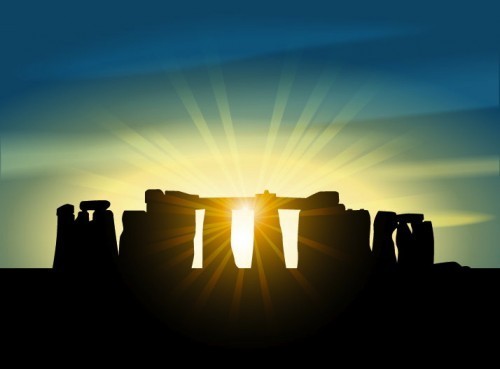 “The Sun, with all those planets revolving around it and dependent on it, can still ripen a bunch of grapes as if it had nothing else in the universe to do.” Galileo Galilei
“The Sun, with all those planets revolving around it and dependent on it, can still ripen a bunch of grapes as if it had nothing else in the universe to do.” Galileo Galilei
The ancients have always known that the Sun is the center of the universe, yet how often do we wake up in the morning and greet it?
How much do we even know about it?
The Sun grows our food, brightens our days, affects the earth’s climate and our health. But we don’t think about it much except to cover ourselves in summer with toxic sunscreen that we don’t really even need [see next week’s post on that].
The Sun is also a great force of spiritual energy and spiritual teaching. So we should take the time to learn more about it!
Some interesting Sun facts
The Sun is a Yellow Dwarf star at the centre of our solar system and is responsible for the Earth’s climate and weather.
One million earths could fit inside the Sun
Light from the Sun takes 8 minutes to reach earth
The distance from the Sun to the earth changes throughout the year because the earth travels on an elliptical orbit around the Sun.
Age: 4.6 billion years
The Sun is middle aged. At around 4.5 billion years old, the Sun has already burned off about half of its store of Hydrogen. It has enough left to continue to burn Hydrogen for approximately another 5 billion years.
If the Sun were to “turn off”, within a week the earth would be 0 degrees F
In a year’s time it would dip to -100 degrees F and millions of years later it would be a stable -400 degrees
Galileo faced the Inquisition over the Sun
Although ancient cultures such as the Egyptians, Greeks and Hindus had always viewed the Sun as the center of the universe, early Western scholars and the Church believed the Earth to be the center of the universe.
Nicolaus Copernicus, a Polish mathematician and astronomer who lived from 1473 – 1543, had the revolutionary idea that the Sun, not the earth, was the center of the universe.
But, without the internet to spread the idea, it went unnoticed until long after his death in 1543.
Galileo Galilei [Italian, 1564-1642] was another proponent of the Sun as the center of the universe.
He wrote a book, Dialog on the Two Chief World Systems, in which he made a case for the Earth revolving around the Sun and not the other way around. The book was a success, and thus attracted the attention of the Vatican.
As a result, he faced the inquisition in 1633. Aging, ailing and threatened with torture by the Inquisition, Galileo recanted his beliefs about the Sun on April 30, 1633. Still, he was tried, found guilty and lived the last eight years of his life under house arrest.
His book was burned and the sentence read in every university
Legend has it that once he was set free from prison, on his way to house arrest, he looked up to the sky and down to the ground and, stamping his foot, said, “Eppur si muove” [“And yet, it moves.”].
There is no real evidence he actually said it, for why would he risk his freedom offending the Inquisition?
But it shows the passion surrounding the debate over whether the earth, or the Sun, was the center of the universe.
The Church officially denied Copernican Theory until 1922.
In October 2009, the Vatican corrected the record with a “not guilty” verdict. Thus ended 359 years of formal condemnation of scriptural heresy against Galileo for holding the truth that the Earth revolves around the Sun!
Spiritual Teachings About the Sun
Native American tribes generally refer to the Sun in the masculine [Elder Brother or Father Sun] and the Moon in the feminine form.
There are Native American legends that the Sun and Moon got married and gave birth to a daughter: The Morning Star. She came down to earth as the White Buffalo Calf Woman and brought the Sacred Pipe to the people.
Mayan spiritual teacher Hunbatz Men teaches that we should pray every morning to Father Sun, using the Mayan name for Sun over and over because the vibration of the Mayan name activates good energy.
This is what the one-thousand year old Seneca Thanksgiving Prayer says about the Sun:
The Great Mystery fashioned a sky above us and put a helper in the Sky who moves about across the earth, yet lives in the Sky.
This helper always comes from the east and travels to the west.
His heart is so big and strong, and his love for his relations so great, that he lights the entire sky when he passes by.
This light is our Elder Brother, the Sun.
He takes his obligation seriously and with great regard, for he never misses a day of this journey.
The Sun brings us warmth and light and allows growing things to flourish.
Let us be of one mind that we may do this properly: We give thanks for our Elder Brother, the Sun.
The things we take for granted are the things that give us life. We would do well to give such thanks every day. This ensures their continuing
Ancient cultures celebrated solstices and equinoxes, which are measures to mark the Sun in relation to the Earth.
The spiritual power of Solstices and Equinoxes
The journey of the Earth around the Sun is marked by four distinct events; the spring equinox, the summer solstice, the autumn equinox and the winter solstice
Winter Solstice is the day when light is reborn out of the darkness of winter. Our days start to become longer and lead us back to the beauty of spring and the warmth of summer, stretching towards their peak at the Summer Solstice
The Summer Solstice marks the longest day of the year.
The equinoxes mark the half-way points, when light and dark are equal – a time of balance.
The Ancients celebrated all four events with great ceremony honoring the Sun’s journey. [Even though it’s really the Earth’s journey, we think of it as the Sun’s, even to the point of saying the Sun rises each morning and sets each night].
The Winter Solstice in particular was a time of prayer asking the Sun to return and bring back long days, light and warmth
Ancient cultures venerated the Sun because the journey of the Earth around the Sun symbolizes our journey to enlightenment. It was that inner journey that was celebrated, not the physical Sun itself.
Temples Built to the Sun
Most ancient cultures celebrated the Winter Solstice and the return of light and life with feasting, music, light and fire, and for many, it was the true beginning of the New Year.
It was so important to the pre-Celt ancients of Ireland that they spent over 30 years building a monument to the returning Sun: Newgrange.
Older than Stonehenge and the pyramids of Giza, it was designed so that on the Winter Solstice, the rising Sun shines directly along the long passage into the inner chamber and for 17 minutes illuminates the chamber floor and the symbols etched on the back wall.
What did the Ancients know that we don’t?
It’s hard for the modern mind to imagine spending 30 years building something to celebrate a three-day event. Yet, that’s how important the return of the Sun was to the ancients.
There are thousands of such ancient sites aligned to the solstices and equinoxes. Many of the ancient mystery schools conducted their initiation rituals and mysteries on the equinoxes and solstices—times of great spiritual energy.
So, tomorrow morning, upon rising, take a moment to look to the Sun. Thank it for its steady dedication to bringing light into our lives.
“Just imagine becoming the way you used to be as a very young child, before you understood the meaning of any word, before opinions took over your mind. The real you is loving, joyful, and free. The real you is just like a flower, just like the wind, just like the ocean, just like the Sun.” – Miguel Angel Ruiz
January 28, 2015
What I learned from Alfred Hitchcock about clearing clutter

 Clearing clutter. We read about it all the time.
Clearing clutter. We read about it all the time.
But it’s more than good housekeeping. It’s a key to self-healing.
When I was in graduate school working on a Masters Degree in Economics [yes, I know that’s hard to believe, but it’s true], I got tired of Economics [that seems much more believable] and instead took film courses.
This was at the University of California at Los Angeles [UCLA], which at the time had one of the best film schools in the country. [It still does].
The film classes were excellent, covered a variety of topics, and were like balm for the soul of true film lovers like me.
One of the best lessons I learned was from a casual comment by our teacher about the Alfred Hitchcock film, “Psycho.” It was a lesson that has served me in work and in life.
The teacher explained that, in order to create a feeling of discomfort in the audience, every time Hitchcock showed the house on the hill, he would change something: the size, location or shapes of the windows and door, the number of panes in the windows, etc.
The shot is never held long enough for the viewer to actually count window panes and be consciously aware of what is different, but even a short view registers in the viewer’s brain as “something’s wrong” with that house.
And this in turn contributes to the audience’s unease while watching the film.
When I learned this, I realized the very importance of having everything neat and orderly in the classroom when I teach. Because it creates a feeling in the students of “everything’s right here.”
The same can apply to your home or office space.
What clutter does to us
New research indicates that clutter in the home can actually trigger depression.
Researchers at my alma mater, UCLA, found a link between high cortisol [stress hormone] levels in female homeowners and a high density of household objects. The more stuff, the more stress women feel.
Men, on the other hand, don’t seem as bothered by mess. That may explain why most women simply must have the kitchen cleared before they can go to bed at night, while men are happy to leave the dishes for the morning.
When I packed for my move from California to the Midwest, toward the end I was running out of time so boxes were just labeled and taped shut without a lot of investigation as to what was in them.
Four years after arriving in Michigan I opened a box labeled “batteries” and found that most of them had expired before I left California. How’s that for being unaware of clutter?
Here are some tips for decluttering with ease, from: The Link Between Clutter and Depression at www.houselogic.com
Adopt the rule of five: every time you walk through a room, put away five things. Or, each hour, devote five minutes to de-cluttering. At the end of the day, you’ve cleaned for an hour! This one works well for me. I’ve even decluttered during a commercial while I’m watching TV.
Pledge to clear and clean your kitchen sink every day. It only takes a couple of seconds more to rinse and put a dish in the dishwasher than place it in the sink. A clean sink will raise your spirits and reduce your anxiety.
Unburden your refrigerator door. If you’re like me, you’ve passed by the door so many times you no longer really notice what’s on there, other than that it’s messy. Researchers found a correlation between the number of items stuck to the fridge door and the amount of clutter throughout the house. Toss extra magnets, file restaurant menus in a drawer, and place calendars in less conspicuous places.
Create unexpected new storage space in out-of-the-way spaces, such as under the stairs.
Fill a box with items you don’t love or use; seal the box, date it and place it in a closet. If you haven’t opened it in a year, donate it [unopened!] to charity.
Declutter your emotional baggage, too
“Decluttering is the number one step in the feng shue process because, if energy can’t flow freely, nothing else can begin to improve.” According to Kerri Rodley, secretary of the Association of Feng Shue consultants in Australia.
There is a spiritual teaching that in order to bring newness into your life, you have to make room. Decluttering is the way to do it.
Your “stuff” carries psychic weight and decluttering will make you feel lighter.
The things we hold onto also represent our emotional baggage, and we certainly don’t want to be holding onto old emotions and memories that don’t serve us any more!
It will also create respect from those around you. In The Wind Is My Mother, Bear Heart tells the story of a man who asked an elder, “Please tell me anything you think I need to know.”
Here was the elder’s answer:
“’I’ll tell you, since you asked me, because you want to live in the community and be well thought of. I saw a lot of your implements laying around in the front yard. Put them together in a shed so you can find them in one place. There are a lot of odds and ends all over, put those up.’
“What the elder was telling him, in a nice way, was to clean up his act. And since he was asking an elder, the man couldn’t talk back to him. Before you learn to do anything else, learn to keep your home in order and gain respect as a responsible member of your community, so that people will be glad to have you as a neighbor. That’s the first lesson you need to learn. Until you do that, don’t try to learn anything else. Your habits and behavior are what people know you by.”
Why is there clutter?
Perhaps a more important question is WHY the clutter got there in the first place. Ask yourself the following questions:
Do I put too much emphasis on material possessions? Am I trying to buy my way to happiness?
Why do I have so much? What is out of balance in my life that I feel the need to fill it with “stuff”?
Who or what do I need to let go of to move forward in my life?
Am I just too busy in general to maintain my home? What do I need to let go of to give myself more time?
Owning less is easier than organizing more.
“I may need it some day” is born out of poverty consciousness. Have the knowledge and faith now that, if you ever need that again, you will find it on Ebay.
Decluttering can generate fresh energy, create space [literally and figuratively] and release old, negative emotions.
So, get your house in order, and you might just find much more of your life will come into balance along with it.
“Clutter isn’t just the stuff in your closet. It’s anything that gets between you and the life that you want to be living.” Peter Walsh
January 21, 2015
What’s in a name? The shameful case of the “Washington Redskins”

 How is the “Washington Redskins” team name still in use in this day and age?
How is the “Washington Redskins” team name still in use in this day and age?
Most of us have heard the term, “Sticks and stones may break my bones but words will never hurt me?”
Did you ever believe it was true?
Not likely, because we all know words have power and can hurt.
In fact, there is ample evidence that negative thoughts, feelings and words, can be harmful to the body.
It follows that everyone, be it an individual or a national sports team, should be more conscious of their use of words.
THE HISTORY OF THE TERM “REDSKINS”
The Washington team has tried to defend its name choice by saying that the term “Redskins” honors Native Americans. But that view doesn’t hold up under scrutiny.
The origin of the term “redskin” is unclear, and may have originally been used by Native Americans themselves to be distinguished from their white-skinned visitors.
Yet, clearly over time “redskin” has taken on a negative meaning.
A newspaper in Winona, Minnesota used the word as part of a bounty notice published in its evening edition on September 24, 1863. The notice read:
“THE State reward for dead Indians has been increased to $200 for every red-skin sent to Purgatory. This sum is more than the dead bodies of all the Indians east of the Red River are worth.”
[Source: http://thinkprogress.org/sports/2014/...]
I think we need look no further than that statement to determine that “redskin” is a disparaging term. It meant “proof of Indian kill.”
In fact, Dictionary.com defines redskin as “a contemptuous term used to refer to a North American Indian.”
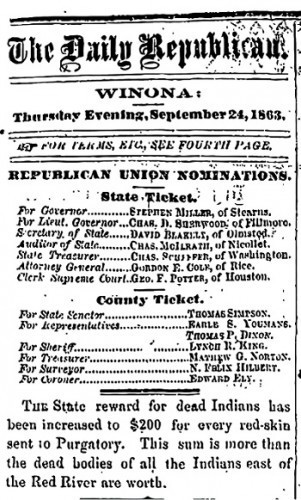 THE ENERGY OF WORDS
THE ENERGY OF WORDSDr. Masaru Emoto’s water crystal work is a powerful demonstration of the power of words. He was a Japanese researcher who developed a technique using a very powerful microscope and high-speed photography to photograph newly formed crystals of frozen water samples.
He discovered that crystals formed in frozen water change when specific, concentrated thoughts or words are directed toward them. Water exposed to loving words show brilliant snowflake patterns. Water exposed to negative words formed incomplete, asymmetrical patterns with dull colors.
Since the average adult body is comprised of 70% water, it’s easy to conclude that the effect of negative versus positive words on our health can be significant.
“Research shows that exposure to negative words can cause a release of stress-producing hormones and neurotransmitters. These chemicals immediately disrupt the normal functioning of the brain, impairing logic, reason, language processing and communication.
“In fact, just seeing a list of negative words for a few seconds will make a highly anxious or depressed person feel worse, and the more you ruminate on them, the more you can actually damage key structures that regulate your memory, feelings, and emotions.” [Source: Words can change your brain; the neuroscience of communication by Andres Newberg, M.D. and Mark Robert Waldman, Psychology Today, 7/31/12]
So it stands to reason that the term “redskins” is a negative word that can contribute to such results just by being out there in the public consciousness.
WHO STANDS WHERE IN THIS CONTROVERSY
Team owner Dan Snyder has said, “We’ll never change the name of the team. It’s that simple. NEVER – you can use caps.”
The Pew Research Center found that at least 76 news outlets and journalists have publicly stated their opposition to the Washington Redskins’ name, or moved to restrict or ban its use.
Veteran NBC sportscaster Bob Costas calls the name, “an insult.”
Several college teams that formerly used the name “redskins” have changed voluntarily, including:
The University of Utah Redskins became Utah Utes in 1972.
The Miami University (of Ohio) Redskins became the RedHawks in 1997.
The Southern Nazarene University Redskins became the Crimson Storm in 1998.
Television personality David Letterman said, “I’m with the American Indians. If they find this offensive, by God, so do I. Haven’t they suffered enough? If this in any small measure makes anyone feel better about who they are, change the name.”
President Obama: “If I were the owner of the team and I knew that there was a name of my team — even if it had a storied history — that was offending a sizeable group of people, I’d think about changing it.”
The United States Congress introduced a 2014 House bill that would strip the National Football League [NFL] of its tax-exempt status if Washington’s franchise continues to operate with “Redskins” as its team name.
In 2014, Fifty U.S. senators wrote NFL Commissioner Roger Goodell to officially call on the Washington franchise to change its team name from the “Redskins” – a request that was quickly shot down by the league.
Virtually every major civil rights organization in America has spoken out in opposition to the team name including:
The National Association for the Advancement of Colored Persons [NAACP],
The American Civil Liberties Union [ACLU],
The Anti-Defamation League,
The Rainbow Coalition and
The League of United Latin American Citizens.
Just this past Monday, January 19, 2015, a civil rights group that has worked with the NFL on diversity issues in the past filed a complaint to the league over the continued use of the name “Redskins” by the team.
The nonprofit Fritz Pollard Alliance [FPA], whose mission statement is to promote diversity and equality of job opportunity in the NFL, said it issued the complaint after carefully studying the issue and meeting with both sides.
The Huffington Post in a January 20, 2015 article quoted the Alliance as saying, “Over the last year, FPA has had multiple conversations with leaders of the Washington Football Club, including owner Dan Snyder and Club President Bruce Allen, as well as leaders in the Native American community,” Fritz Pollard Alliance Chair John Wooten and Executive Director Harry Carson said in a joint statement obtained by NBC Sports. “Based on our study and conversations, we believe the Washington Club should cease using the name.”
Members of the American Anthropological Association, Netta Avineri, Ph.D. and Bernard Perley, Ph.D., said in an article in the Huffington Post that,
“Teams choose names, mascots, and logos that embody the vigor and grit that athletics provide and should reflect positive associations, identities, and role models, especially for young people. . . while some sports identities depict Native Americans with respect and sensitivity, many do not.
“We as anthropologists have documented the personal pain, ostracism, and societal hardship that racism creates for Native Americans. We call on Dan Snyder to retire the name — it is a racial slur that must be abandoned.
“How do slurs hurt? They create a climate that degrades a whole segment of the population, rather than fostering an inclusive, respectful environment.”
THE 2014 TRADEMARK RULING
On June 18, 2014, the Trademark Trial and Appeal Board (TTAB) of the United States Patent and Trademark Office (USPTO) cancelled the six trademarks held by the team in a two to one decision that held that the term “redskins” is disparaging to a “substantial composite of Native Americans”, and this is demonstrated “by the near complete drop-off in usage of ‘redskins’ as a reference to Native Americans beginning in the 1960s.”
The effect of the ruling is largely symbolic; the team can still use the name, but now has no protection against infringement and counterfeit merchandise. The team is fighting the decision in Federal Court.
AN EXCUSE THAT JUST DOESN’T STAND
Owner Snider has clung to the defense that the team name was changed from “Braves” to “Redskins” in 1933 to honor the team’s then-head coach, William “Lone Star” Dietz, who claimed to be Native American.
Historian Linda M. Waggoner’s research found that Dietz was not Native American at all, but falsely represented himself as one in order to avoid the draft in WWI. As a result, he spent 30 days in jail.
quote then owner of the team, George Marshall, as saying he changed the name from the Boston Braves to the Boston Redskins so the team wouldn’t be confused with the Boston Braves baseball team. “The fact that we have in our head coach, Lone Star Dietz, an Indian, together with several Indian players, has not, as may be suspected, inspired me to select the name Redskins.”
AND A CHILD SHALL LEAD THEM
In 2013, the school board in Cooperstown, New York voted to drop the “Redskins” name used by Cooperstown Central High School. The vote came at the request of students who no longer saw the name as appropriate.
There are virtually no Native Americans in Cooperstown. In fact, according to the Census Bureau, Otsego County, New York is nearly 95% white. Native Americans make up just 0.2 percent of the county’s population.
Native Americans hadn’t forced this change. A group of white students who didn’t want to exclude another group of Americans had.
Arthur Halbritter, Native American leader in the fight for a name change said, “They were kids and they did something these billionaire team owners and the nine-billion-dollar NFL won’t do. That was sort of a shining light moment, a moment of clarity. That was very inspiring to us.
“There’s no financial solution to a moral problem,” Halbritter said. “Just because you’re a billionaire doesn’t give you the right to use a racial slur.”
There are those who say that not all Native Americans are offended by the term “redskins.” My reply to that is: “been down so long it looks like up to me.”
Too much of our society has gone unconscious and doesn’t think about the repercussions of even the smallest act or word.
It’s time to wake up, be responsible and do the right thing.
Let’s hope as the pressure mounts, wiser heads will prevail and the use of this racial slur will stop.

